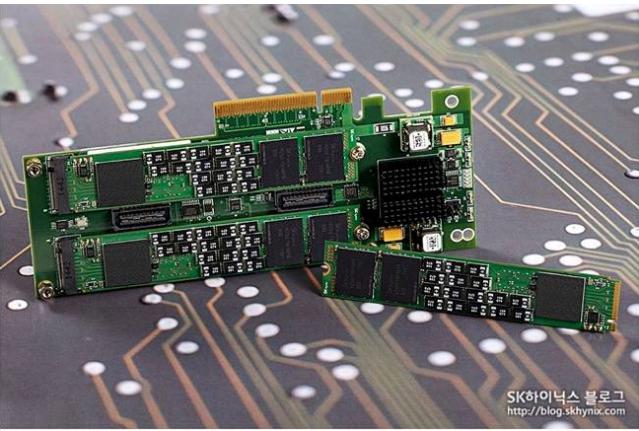Western Digital develops zoned SSD to improve data access speed
Western Digital develops zoned SSD to improve data access speed
Shingled disk drives
Shingling exploits the difference in width between larger disk drive write tracks and read tracks. The tracks are shuffled closer, keeping read tracks separate while overlapping write tracks at their edges.

Disk shingling concept
This means that the driver can hold roughly 20% of the data.
But data can no longer be directly rewritten as that would also alter an underlying write track.
Instead whole blocks of write tracks are rewritten when any data in the block needs rewriting. This necessitates reading the data in the block, adding the new data and then writing the data back to the block of tracks.
Three points to note: first, this is similar to the read-program-erase (PE) cycle used when blocks of written data are recovered for re-use in SSDs. Second, in Western Digital’s scheme the host manages the shingled drive re-write process and not the drive itself. Third, a block of tracks is also a zone of tracks.
Shingled drives are finding favour with hyperscale customers who need to store PBs of read-centric bulk data as cost effectively as possible, and relish turning a raw 14TB disk drive into a 16TB shingled disk drive. Western Digital will introduce shingling to its MAMR drives to build a path to 20TB capacity in 2020 and from there to 40TB and 100TB. Write tracks are wider than read tracks and shingled disk drives take advantage of this to overlap write tracks as a way of cramming more read tracks on a platter.
Zoned NAND
In some cases, these customers need faster access to read-intensive reference data than disk storage can provide. Step forward QLC (4bit/cell) flash. However it wears out faster than TLC (3bits/cell) flash. QLC has a low PE cycle number – possibly 1,000 to 1,500.
Data is written anywhere there is free space in an SSD, without reference to usage patterns or access frequency. Each SSD looks after its own data deletion, in a process called garbage collection that recovers blocks for re-use.
This involves reading any valid data in the blocks and writing it elsewhere in the SSD so the contents of a whole block can be erased and recovered.
The additional writes are called write amplification and this can prolong the life of an SSD if the write amplification factor is as low as practicable. Western Digital thinks zoning can achieve this and that applications that host-manage shingled drives can managed zoned SSDs equally well – the interface is basically the same.
Zoned NameSpace SSDs
Matias Bjørling Western Digital’ director for solid-state system software ,gave a presentation on this topic at the Vault’19 Linux Storage and Filesystems conference in February 2019. He said a NVMe working group developing industry standards for Zoned Namespaces (ZNS) has a technical proposal for the technology.
NVMe-access SSDs have parallel IO queues and these can be used to direct different data types to different zones of an SSD in WD’s Open-Channel concepts scheme. The zones can span multiple dies their size is based on the SSD’s block size.

Bite-sized chunks
The drive’s address space is known as its Logical Block Address (LBA) range and this is divided conceptually into chunks, which are multiples of the SSD’s block size.
Chunks are grouped together into zones and these zones are aligned to the NMAND block size and zone capacity is aligned to the SSD’s capacity.
Different zones can be dedicated to different types of data – music, video, images, etc. – so that the usage pattern for data within any one zone is constant and predictable.
Each zone is written sequentially. Incoming data of any one type is divided into chunk-sized pieces and written to a specific zone in sequential format. Zones can be read randomly and are deleted as a whole, which reduces consequent write amplification to near zero and prolong’s the SSD’s life.
The SSD controller’s own workload is reduced and it needs less DRAM to do it, which lowers its cost. As well as reduction in the write amplification factor, the SSD needs less over-provisioning of capacity to replace worn-out cells during its working life., IO performance is more consistent, as there is little or no interruption from device-side garbage collection or wear-levelling.
SK Hynix and Microsoft
SK Hynix is developing a zoned SSD and has blogged about it. It suggests zoned SSDs could be 30 per cent faster than their traditional counterparts and last four times longer.

SK Hynix zoned M.2 format SSD
Microsoft is also keen on the idea, with principal hardware program manager Lee Prewitt speaking on the subject at the Open Compute Project summit this month. He thinks zoned name spaces is being standardized in NVMe, and that software must write sequentially into an open zone and read randomly from any zone. He also claims software can deletes a zone as a whole to allow for very efficient garbage collection in the drive.
Blocks & Files thinks zoned SSDs will find a role as storage devices for bulk, fast-access reference data and help make both TLC and QLC flash usable as a near-archive data store.
